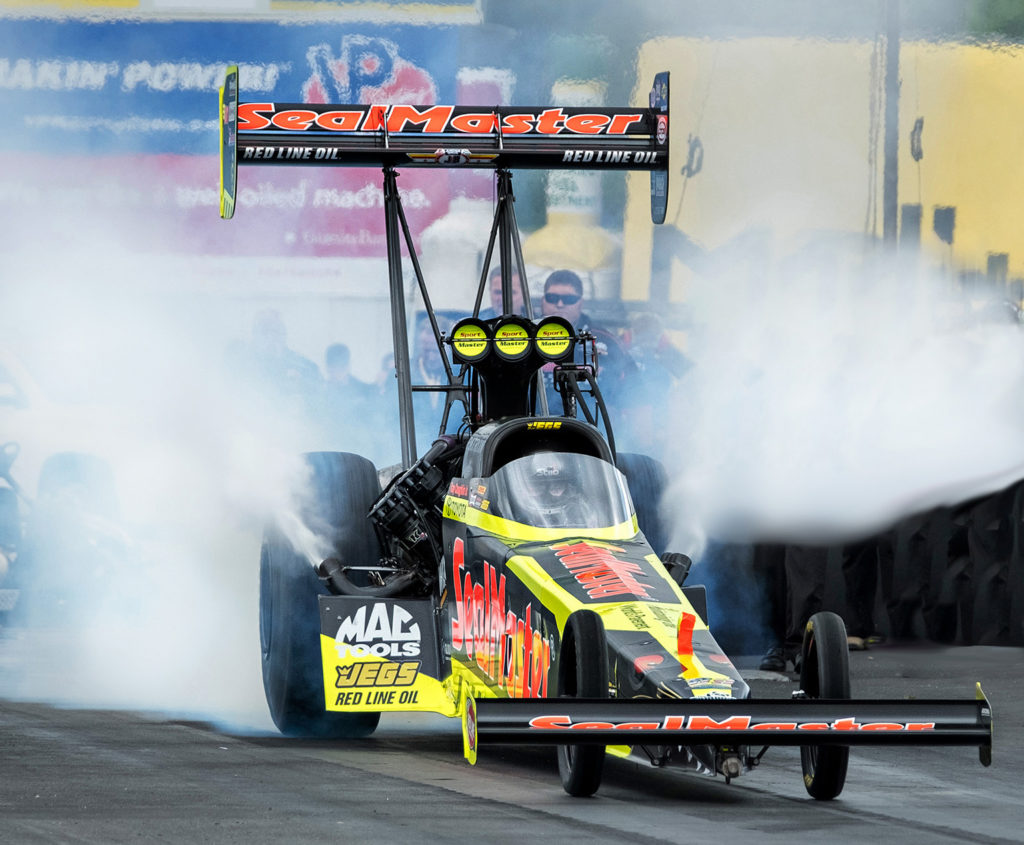SHOOT TO SELL • PACK FOR THE OCCASION
Welcome to Part 4 of “The Need For Speed”; a series designed to teach you everything you need to know about creating photographs at the racetrack. If you’re just joining us now you will want to read the previous three posts first. They can be found easily by using the following links:

Beyond The Racetrack • Behind The Scenes
No professional motorsports photographer will deny that the greatest satisfaction comes with creating epic images on track. The perfect motion blur of an IMSA Weathertech Pirelli World Challenge GT car. An NHRA Funny Car executing a smoky burnout. A MotoAmerica Superbike carving through the esses on a road course. These are the glamour shots.
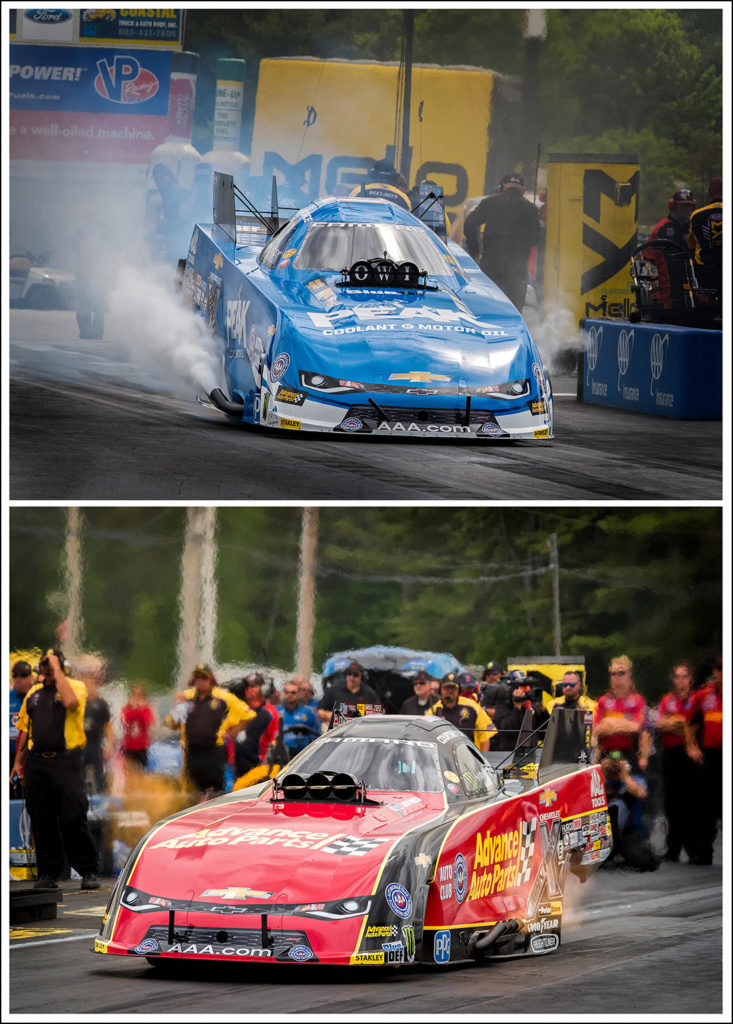
Top: Funny Car legend, John Force. Bottom: His daughter, Courtney, continuing the family legacy
They are not necessarily “the money shots”. When capturing photographs at the racetrack you have to pay attention to off track activities as well. You will find great revenue streams in those behind the scenes images.
Consider for a moment the staggering amount of advertising dollars that are spent sponsoring racing events. To sponsor an NHRA Top Fuel or Funny Car team, sponsors pay up to $50,000 for a single event. M&Ms’ parent company, Mars, pays a reported $12 Million annually to be the primary sponsor for a single car on the NASCAR Joe Gibbs Racing (JGR) race team. Rolex reportedly pays $45 Million annually for its sponsorship of the Formula 1 series. Red Bull budgets a staggering $150 million dollars in its multiyear sponsorship deals in motorsports.
It’s Not Just Sports Photography
All of these big ticket sponsors represent a tremendous market to motorsports photographers. Keep that in mind when you’re creating photographs at the racetrack. The public relations departments of major corporate sponsors will become some of your best clients. They love pictures of ‘their’ cars on track, of course. But they also love behind the scenes shots of ‘their’ drivers interacting with the public, their corporate logos displayed in the racing environment, group shots of VIPs being entertained at the racing venue, etc.
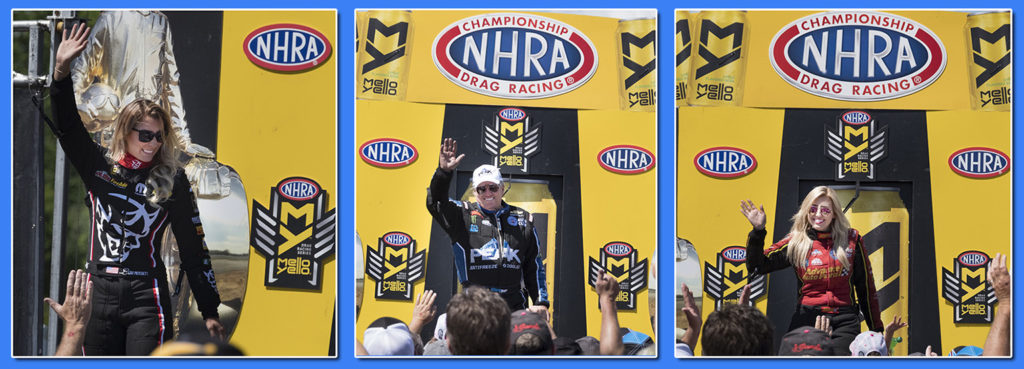
NHRA drivers being introduced wearing the racing suits bearing their sponsors names & logos
The list of salable photographs is only limited by your imagination and the effort you put in at the track. Suffice it to say that corporate sponsors want to keep a permanent visual archive of how they spent their sponsorship money. Their budgets are righteous and their pockets are deep. Pay attention.
The images below are samples of behind-the-scenes shots that have brought in good revenue. The sponsors name emblazoned on the outfit and accessory of a MotoAmerica umbrella girl. The Michelin Man mascot interacting with the camera. MotoAmerica champion Tony Elias in his signature wild sunglasses; wearing his race suit covered in his corporate sponsor’s logos.
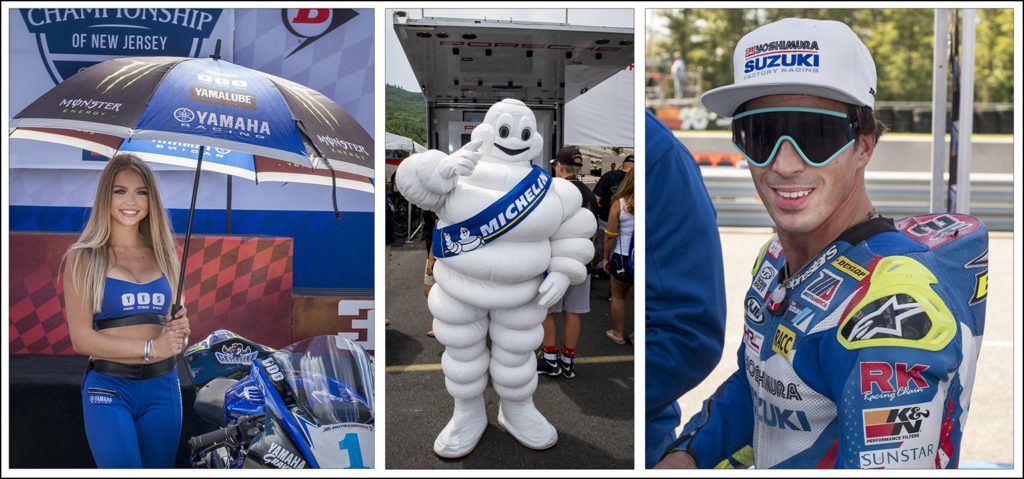
A Day To Remember
The crowning achievement in racing is to reach the podium. To be the champion…or even the first and second runner-ups. Make sure that when the racers hit the winner’s circle, you are there to capture the festive moment.
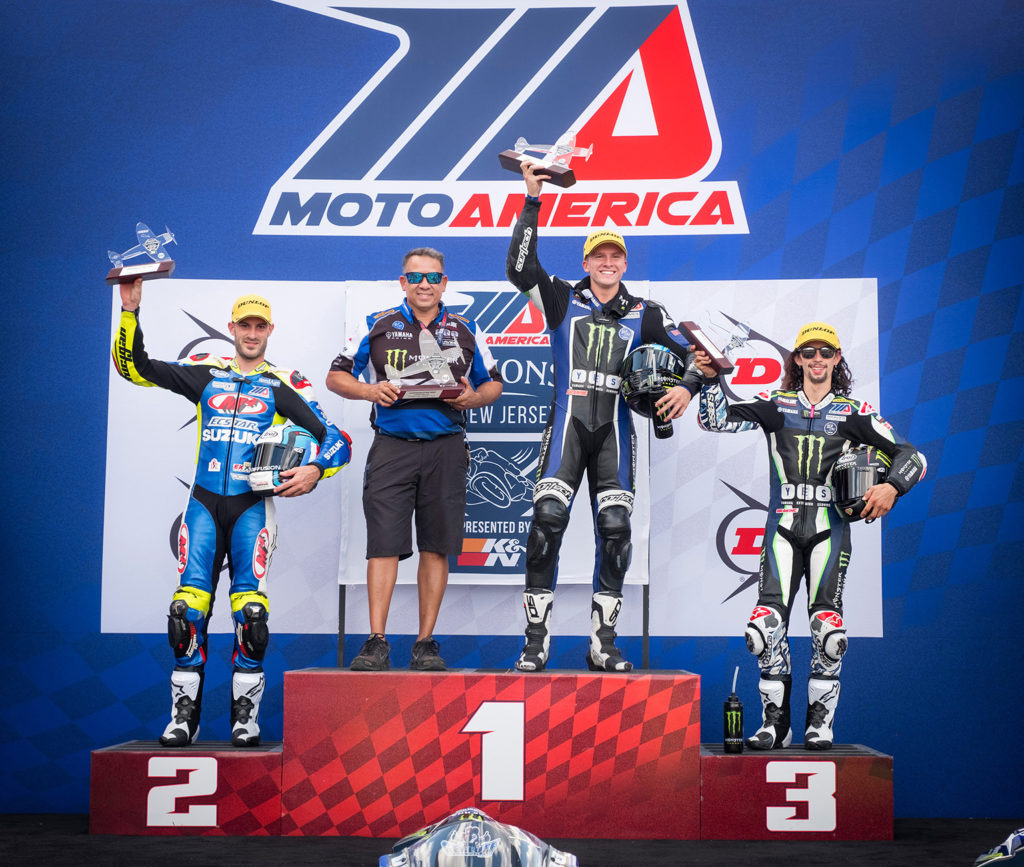
You will be one of dozens of professional photographers at any given racing event. Your podium image might be “lucky” enough to be picked up by the wire services for distribution to the public. You’ll be paid a flat rate for the release of that image which might be distributed to media outlets worldwide.
Your corporate clients, however, are a much more lucrative outlet. They will purchase the rights to your image for display on their own websites and for use in company publications. They will purchase multiple print copies of the the winner’s circle image for distribution to the various corporate VIPs that attended or supported the race sponsorship. Unless you are working in a “work-for-hire” capacity; you, as the artist, get to decide where your images go…and at what price.
Speed Contest
I don’t have to tell you that the world of professional sports reporting has changed drastically over the years. Gone are the days when today’s images only wound up in next month’s issue of Sports Illustrated. News is reported as it occurs these days. Speed counts off the track as much as it does on the racing surface.
At every major racing event credentialed photographers have access to the media center. Therein you will find fast reliable WiFi to get your photographs at the racetrack off to your media outlets instantly. If you’re working for an online media outlet you may have a tight deadline to get your images uploaded to your editor(s). The media center is a crowded spot after every race. It’s also a great place to grab a cold drink and a snack during the occasional downtime experienced between the action on track.
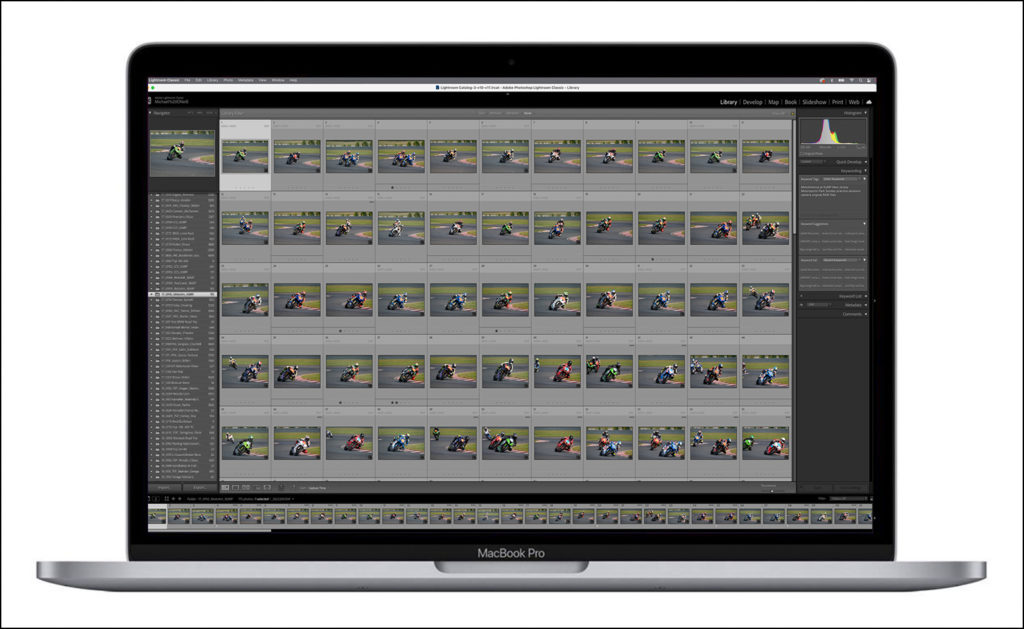
I carry my M1 MacBook Pro in my camera bag to all events where I will need to use the media center for my deliverables. It is imperative that you have a fast, efficient workflow to cull, process and transmit your images as quickly as possible. It should go without saying that the photographs at the racetrack that you’ve captured be as near-to-perfect as possible out of the camera. You won’t have a lot of time for editing and correcting mistakes if your market is in electronic media distribution.
Other Equipment Considerations
While we’re speaking about equipment that I carry, this is as good a time as any to discuss environmental conditions at racing venues. In a word: BRUTAL. If you’re the type of photographer that pampers your gear, and are one to shy away from exposure to harsh environments; then motorsports photography is not going to be your niche.
Race venues are dirty! Monster Trucks and Motocross are pretty obvious examples. Dirt is flying everywhere. Road racing courses are wide open venues…some up to almost five miles in length. The wind blows dust and debris everywhere. NHRA drag racing events might be the worst. Rubber, burnout smoke and nitromethane fumes fill the air. I’ll never forget the first time I covered an NHRA Nationals event. I spent hours cleaning the dirt and rubber residue off my cameras and lenses after the meet.
The Show Must Go On
Road racing events, whether automobile or motorcycle, are unique in that there are rarely cancellations on account of weather. The race goes on, rain or shine. You’ll often find yourself making those photographs at the racetrack in deplorable conditions.
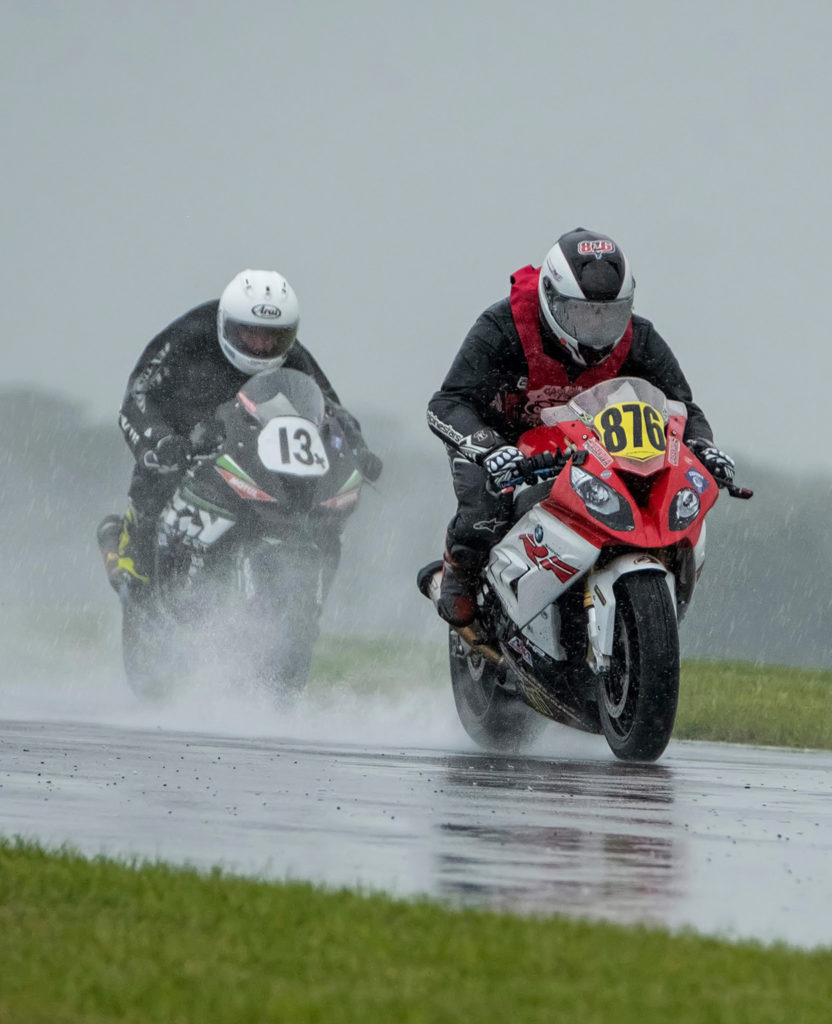
MotoAmerica Superbikes on track in a driving rainstorm
Be sure to use adequate rain protection for your gear. I carry my gear in a LowePro backpack which has an integral rain cover. It has never let me down. When actually shooting I use a LensCoat camera and lens cover. This brand was recommended to me by a wildlife photographer that I know. He subjects his gear to the harshest environments imaginable. The LensCoat cover has never failed to keep my Nikons dry.
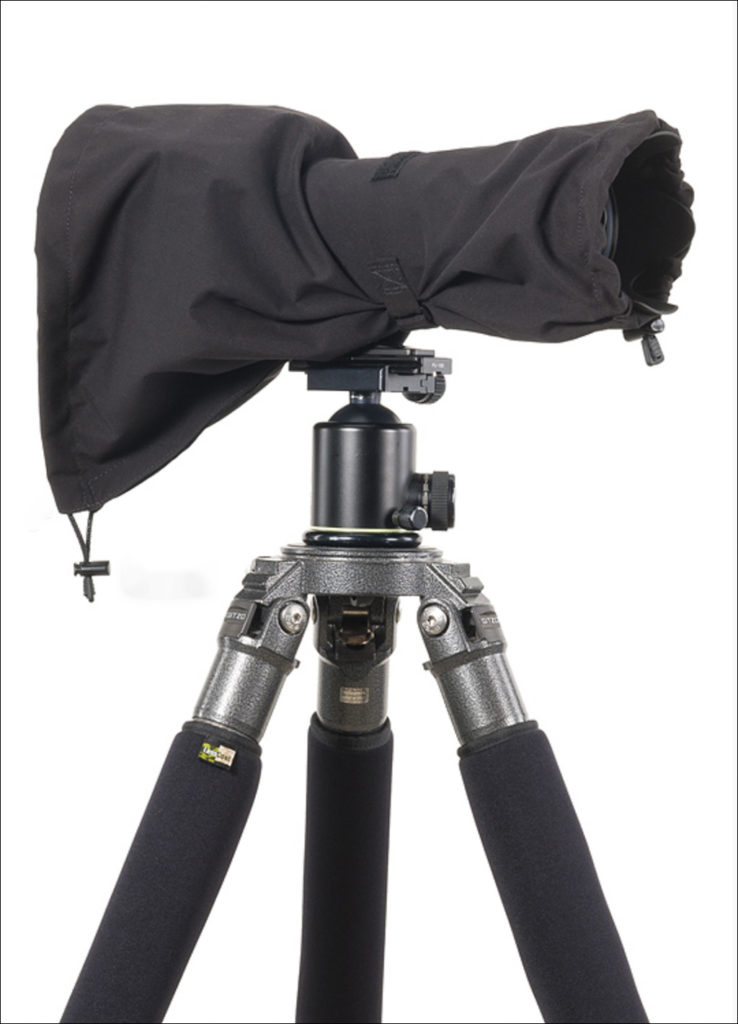
Tripods At The Track?
That depends on the track. As stated in an earlier post, I like to “shoulder” two camera bodies when moving about a racing venue. When I’m settled in at a certain place on the racetrack I do like to have my secondary camera on a tripod. Personally I use the Peak Design travel tripod when working a racing event. It is an extraordinary piece of equipment…one that I devoted an entire product review post to. It is available in both aluminum and carbon fiber versions.
The tripod serves a number of purposes. It keeps my secondary camera off the ground. Its integral load hanging hook keeps my gear bag off the ground. Most importantly, it provides the steady perch needed for those long telephoto shots…some more than 1000mm out.
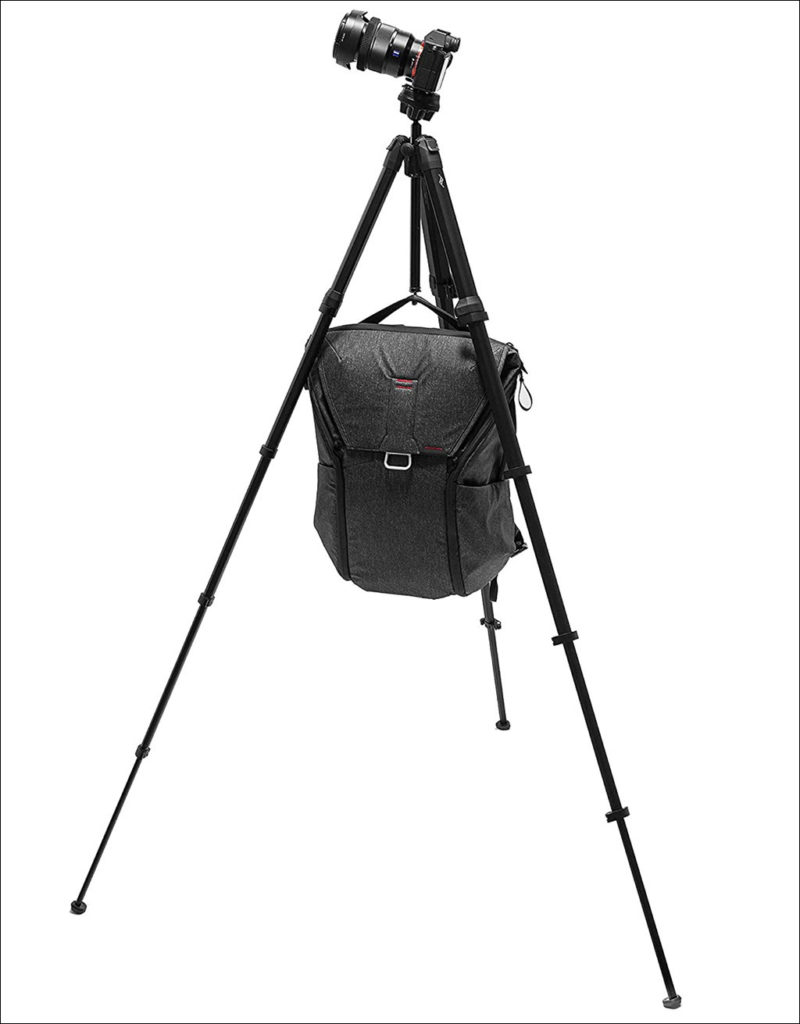
Peak Design Tripod with camera case on load holding hook
Certain photo positions at some venues will be off limits to tripod use. Before the start of every major racing event you will be required to attend a media meeting. At this time any tripod restrictions in place will be made clear to the photographers on site.
Take Care of Yourself Too
We’ve talked about weather protection for your valuable camera gear. You’ll want to keep yourself dry as well. Personally I use my motorcycling rain gear for inclement conditions when I’m creating photographs at the racetrack. I carry my Nelson Rigg Stormrider suit with me. It keeps me dry in torrential downpours on the road and has no problem keeping me comfortable at the race track. I highly recommend this suit for my motorcycling audience and my photography followers.
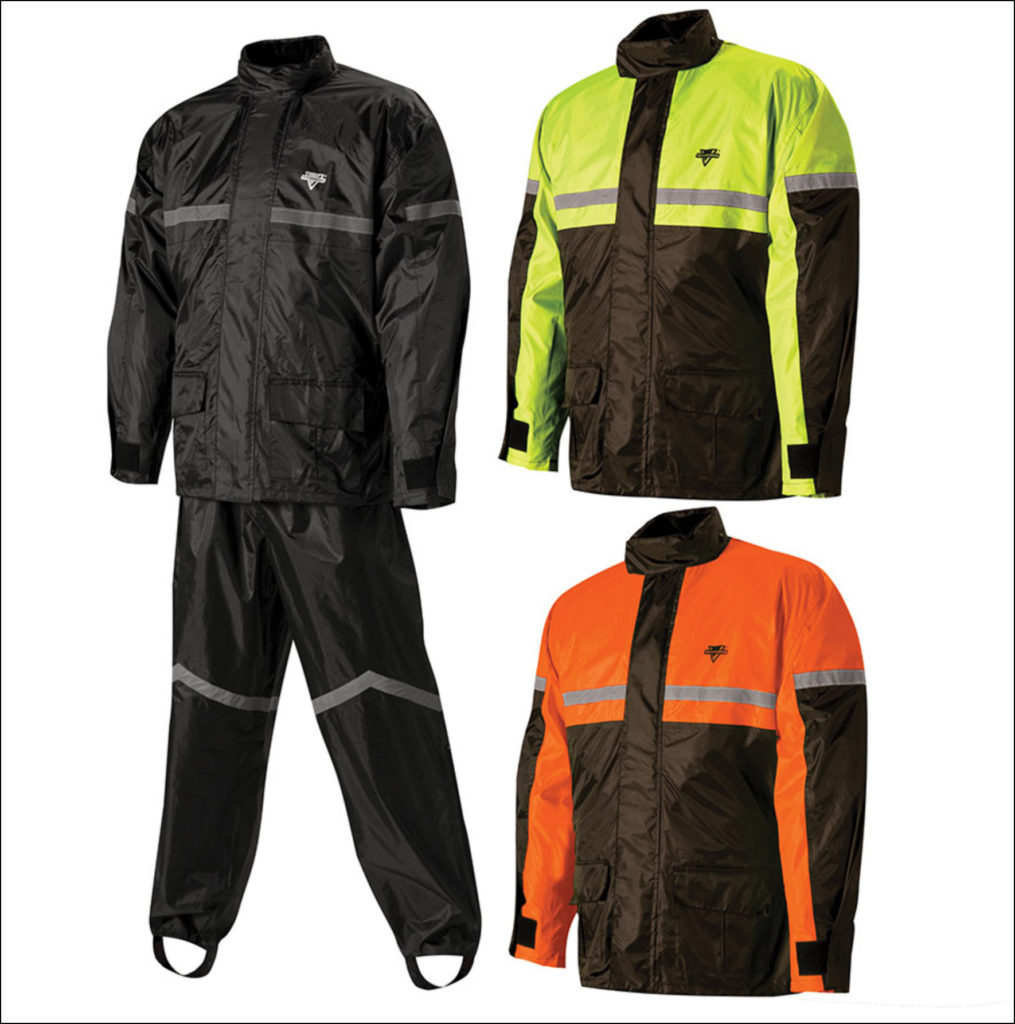
Use ear protection! The sound generated by racing machines is astounding. It can cause temporary, or even permanent hearing loss if you don’t protect yourself. I have a couple of favorites. For most road racing events I find the Peltor Sport earplugs the ideal solution. They are very lightweight, unobtrusive and comfortable. Furthermore they have an integral cord that hangs conveniently around your neck when they’re not in place; such as the down time between rounds of racing.
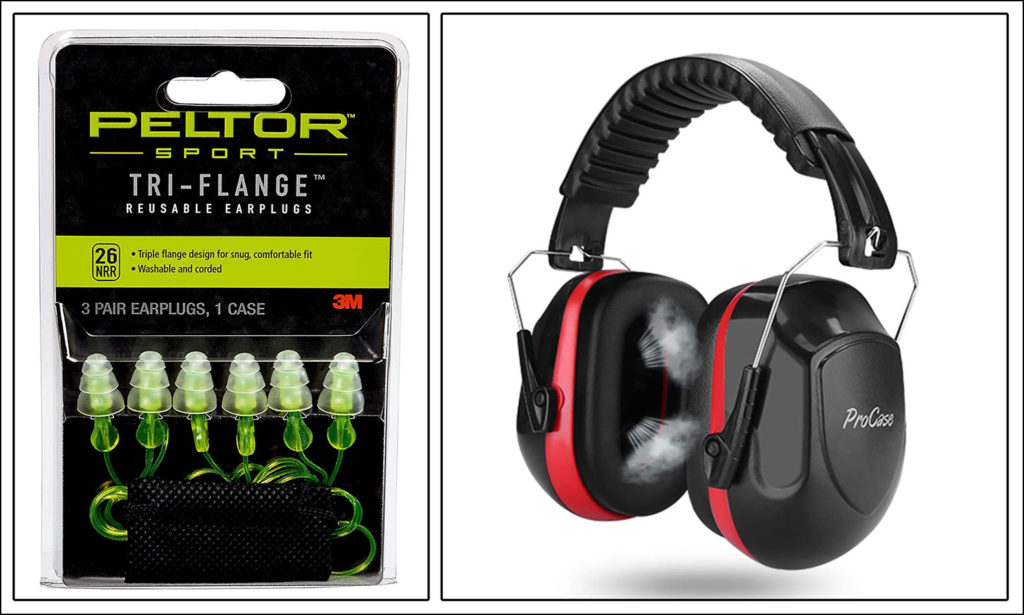
When I’m on the starting line at an NHRA Nationals drag racing event I double up the ear protection. You really can’t understand just how loud a 10,000+ horsepower Top Fuel Dragster or Funny Car is until you actually stand 50 feet away from one when it launches. It is intense. The experience heats up the air, rocks your internal organs and can knock you off your feet. What it can do to your ears is downright dangerous. At these events I add a ProCase hearing protection headset on top of the aforementioned ear plugs. Please…do not ignore this advice!
It’s Not Just The Noise
If you have the opportunity to cover an NHRA Nationals drag racing event there’s one more thing I want you to worry about. Nitromethane. Both the NHRA Top Fuel and Funny Cars burn nitromethane fuel. The exhaust gases from these cars contain nitric acid vapor. When inhaled it can cause a muscular reaction making it impossible to breathe. That same exhaust vapor can cause damage to your eyes.
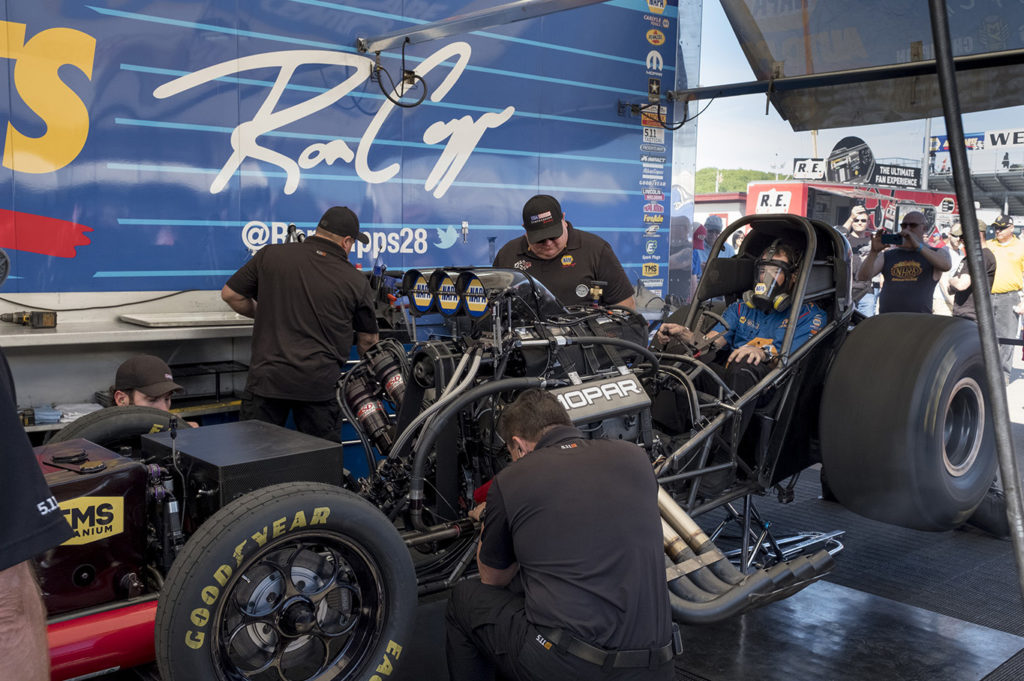
In the image above NHRA Funny Car driver, Ron Capp, has donned a face shield with a full respirator. When you see this happen get your shot and get away! They’re about to fire up this monster. The fumes are not an issue when you’re in any of the approved photo positions on track, but they can be deadly up close in the pit area. Be aware.
Creating Those Photographs At The Racetrack
That about wraps it up for this installment in the professional motorsports photography series. In the next post we’ll be discussing a question that a lot of you have raised. How does one break into this exciting business? As always we welcome your comments below. If you have specific questions you need addressed, feel free to contact us via email. Be sure to subscribe to Roadcraft USA to receive alerts when new posts hit the blog.
Please help support the Roadcraft USA online resource by making product purchases through the links in this post. As Amazon Associates we earn commissions from qualifying purchases made through these links. There is no additional cost to you whatsoever. Thank you for your support!
Click Here to view an interactive visual index page where you can quickly browse through all of the great features that are published on the Roadcraft USA blog.

